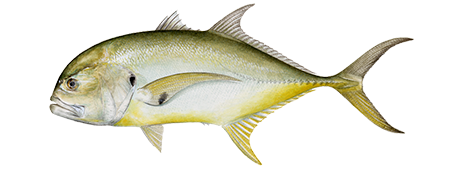Crevalle Jack

Jacks are among the many species of tropical fishes, which have been implicated in ciguatera poisonings.
HOW TO IDENTIFY A CREVALLE JACK
There is rounded black spot at the lower base of the pectoral fin of the crevalle jack that is found in no other jacks in the area. There is also a distinct, vertically elongate black spot on the operculum. Enlarged scales or scutes, numbering about 30, extend in a line to the base of the tail fin. The similar horse-eye jack has no pectoral fin spot and 26-35 scutes.
WHERE TO CATCH CREVALLE JACK
Occurs only in the western Atlantic Ocean from Nova Scotia, Canada to Uruguay, including the Gulf of Mexico and, occasionally in the West Indies.The crevalle jack is the common jack of inshore oceanic waters. The species apparently can tolerate a wide range of salinities and occurs around offshore reefs, in coastal waters, harbors and protected bays, over highly saline shallow flats, in brackish waters at river mouths, and has even been known to travel up coastal rivers. The following list includes additional details on where to catch this fish:
HOW TO CATCH CREVALLE JACK
A voracious predator, it feeds primarily on smaller fishes, which it often chases onto beaches or against seawalls. In open water, jacks will herd bait fish into a tight mass, then rush in from all sides. The crevalle jack also feeds on shrimp and other invertebrates and on garbage dumped from boats.This superb light tackle species can be taken by spinning, fly fishing, trolling, or surfcasting. Lures should be retrieved at a fast pace without pausing or stopping as jacks tend to lose interest in anything that doesnt act normally. The following are fishing methods used to catch this fish:
CREVALLE JACK LURES, TACKLE & BAIT
The following are lures, tackle or bait that can be used to catch this fish: